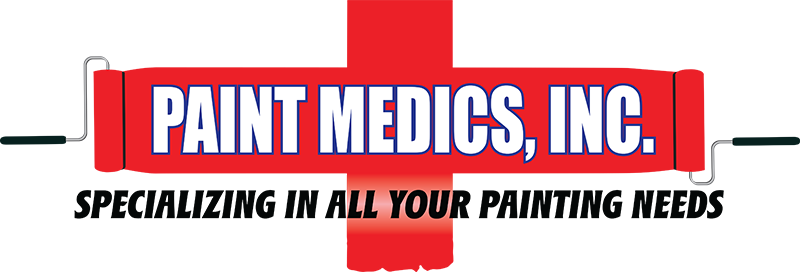The concept of understanding the difference between Interior vs Exterior Paint is the key to a finish that not only looks great but lasts for years. At Paint Medics, we’ve seen how the right paint choice can make or break a project. Choosing the wrong type can lead to costly mistakes.
Interior Paint: Designed for Comfort and Beauty
It is necessary to know that interior paint is formulated with one main purpose which is making your indoor spaces look good and feel inviting. The key qualities of interior paint should include following traits:
- Ease in cleaning: Interior paint has been designed to resist the stains and marks along with a finish that further allows for simple wipe-downs.
- Low or no VOCs: Most of the interior paints today are low in volatile organic compounds (VOCs) that are making them safer for breathing because it’s used inside.
Exterior Paint: Built to Withstand the Elements
Now let’s flip the script. Exterior paint has one job above all which is to protect your home against the harsh outdoors. That clearly means it needs to be stronger, more durable, and resistant to all kinds of environmental stress. Following are the key features explained which include:
- Weather resistance: It is essential to know that exterior paints are certainly made to resist rain, snow, wind, and intense sun exposure without peeling or fading.
- Mold and mildew resistance: There are certain additives added in the paint to treat the problem of the bacterial growth in damp climates.
- Flexibility: The paints which are for exterior are more likely to expand and contract with temperature changes, so it doesn’t crack when the weather swings from hot to cold.
The Real Differences Between Interior vs Exterior Paint
So, what really sets the two apart? It all comes down to their significantly different chemistry. The interior paints are designed with resins that make them washable and beautiful whereas exterior paints use stronger resins and additives in order to fight UV rays, moisture, and mildew.
There is another major difference which is related to the concept of safety. It is interesting to know that the exterior paints do often contain more VOCs which might end up becoming harmful in enclosed spaces. However, the idea of using exterior paint indoors isn’t just a bad one but it can be really unsafe for your health at the same time.
On the other hand, if we use interior paint outdoors then the finish will break down quickly. It may look good for a few months, but rain, heat, and cold will soon cause peeling, cracking, and fading.
Which Paint Should You Choose?
The answer is simple that you should always use paint where it’s meant to be used. If you’re refreshing your living room then you should definitely go with high-quality interior paint. If you’re repainting your deck railing then you should definitely choose durable exterior paint.
At Paint Medics, we always guide homeowners through these choices in order to ensure that every project not only looks great on day one but continues to shine for years. It’s not just about color but more about performance.
Pro Tips for a Perfect Finish
You should never skip on prep that further includes cleaning, sanding, and priming surfaces before painting. This step might end up playing a major role to ensure the best adhesion and a smoother finish also. It’s also important to pick the right finish as flat or matte works well indoors to hide imperfections, while satin or semi-gloss holds up better outdoors.
It is suggested not to skip the factor of climate as in humid or rainy areas, the exterior paints with mold resistance might end up the smarter choice. Here is the biggest secret, always invest in quality paint. They do help in providing longer-lasting protection and a more durable finish while high-end options may cost more upfront.
How Climate Affects Paint Performance
Did you know climate has a huge impact on how long your paint job lasts? That’s why exterior paint is made to handle just about anything like scorching sun, heavy rain, snow, or even high humidity also. The sun emits UV rays in hot areas that might end up causing fading and chalking, while in colder regions, paint is required to be flexible enough in order to expand and contract without cracking. If you live somewhere humid then you’ll definitely want exterior paint with strong mold and mildew resistance. In contrast, interior paint doesn’t face harsh weather. It’s designed to provide smooth finishes, easy cleaning, and beautiful walls.
FAQs About Interior vs Exterior Paint
1. Can I use exterior paint inside my home?
Exterior paint can never be used inside homes as they contain harmful chemicals. They are severely injurious to health.
2. What happens if I use interior paint outside?
If you use interior paint outside then it will quickly peel, fade, or crack when exposed to extreme weather conditions.
3. Is there a big price difference between interior and exterior paint?
Yes because exterior paints are often a little more expensive because of the extra durability and additives.
4. How long does exterior paint last compared to interior paint?
Exterior paint usually lasts 5–10 years depending on weather conditions.
5. Do I need primer for both interior and exterior projects?
Yes, primer is always recommended for long lasting effects.

